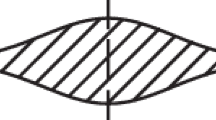Abstract
The continuous increase in already high specific performance of aero engines and growing optimization demands require further innovation in the fields of materials and design of structures to reach the primarily aerodynamic driven goals. In general, the improvement of materials on its own cannot guarantee success but rather the combination of different materials offers the potential for increased performance and additional functionality. For using different material properties, an adapted hybrid design is necessary. Within this design outstanding material characteristics should be addressed, whilst the lower performance properties must not be critical and provoke faults. By combining different materials within hybrid structures, the feasible increase in performance is accompanied with the challenges of handling a lot more parameters for optimization. Three examples are described in this paper, showing hybrid design approaches for aero engine structures. The design principles can be transferred to similar structures by using the shown basic mechanisms. The first example covers a hybrid ring structure used for simultaneous movement of stator vanes within an axial compressor. BLISK technology with high aerodynamic efficiency and low structural damping requires an accurate positioning of the stator vanes to avoid dynamic excitation in transient surroundings during a complete flight cycle. Additionally, the weight of the structure should be reduced compared to conventional in-service structures. A second example shows a hybrid fan blade. Here it is demonstrated how titanium can be combined with carbon fibre-reinforced plastics to create an airfoil. This concept can be implemented in generating stator vanes and rotor blades for aero engines. A special surface treatment leads to a non-aging jointbetween the two materials. The third example explains the basics for an alternative hybrid rotor design. Three titanium rotor segments are joined together by brazing under vacuum conditions. During the manufacturing process, the inner areas of the rotor are accessible which offers the opportunity to integrate cavities as well as fibre reinforcement.


























Similar content being viewed by others
References
Amoo, L.M.: On the design and structural analysis of jet engine fan blade structures. In: Progress in Aerospace Sciences, vol. 60, pp. 1–11 (2013)
Kocian, F.: Leitschaufel-Verstellring. Patent DE 195 16 382.6
Kocian, F., Dudenhausen, W.: Aeroengines—conservative design contra fibre reinforced materials? 25th Sampe Europe Conference Paris, 30th Mar–1st Apr 2004
Kocian, F., Dudenhausen, W., Plevnik V., Voit-Nitschmann, R.: Faserverbundwerkstoffe im Triebwerk, Chancen durch neue Konstruktionskonzepte. DGLR Jahrestagung München, (2003)
http://www.e-break.eu. Accessed 17 April 2014
Kocian, F.: Rotorschaufel. Patent DE 101 10 102.3
Kocian, F., Plevnik, V., Reifegerste, K., Steinheber R., Pritzkow, W.: Formgebung von faserverstärktem CF-PEEK durch armierte Keramik. DGLR Jahrestagung Stuttgart (2002)
Leyens, C., Kocian, F., Hausmann, J., Kaysser, A.: Materials and design solutions for high performance compressor components., pp. 13–14. 4th ONERA-DLR Aerospace Symposium, Cologne (2002)
Schulze, K., Hausmann, J., Wielage, B.: The stability of different titanium-PEEK interfaces against water. Elsevier Proc Mater Sci 2, 92–102 (2013)
Naghipour, P., Bartsch, M., Hausmann, J., Schulze, K.: Modelling Shear Fracture of Hybrid CFRP//Ti Laminates with Cohesive Elements; Effects of Geometry and Material Properties. Commonality of Phenomena in Composite Materials, San Diego (2011)
Naghipour, P.: Simulation and experimental evaluation of mixed mode delamination in multidirectional CF/PEEK laminates under quasi-static and fatigue loading. Universität Stuttgart, Stuttgart (2011)
Kocian, F., Plevnik, V.: Rotor, Verfahren zur Herstellung eines Rotors und Verfahren zur Reparatur eines Rotors. Patent DE 10 2005 034 435.6
Hausmann, J.: Modellierung und optimierung faserverstärkter Titanlegierungen. TENEA Verlag, Berlin (2003)
Siller, U., Voß, C., Nicke, E.: Automated multidisciplinary optimization of a transonic axial compressor. 47th AIAA Aerospace Sciences Meeting, Orlando (2009)
Görke, D., le Demnat, A.-L., Schmidt, T., Kocian, F., Nicke, E.: Aerodynamic and mechanical optimization of cF/PEEK blades of a counter rotating fan. In: ASME GT2012-68797, (2012)
Vasanthakumar, P., Ebel, P.-B., Forced response analysis of a transonic fan. In: ASME GT2012-69867 (2012)
Vasanthakumar, P.: Computation of aerodynamic damping for flutter analysis of a transonic fan. In: ASME GT2011-46597 (2011)
Author information
Authors and Affiliations
Corresponding author
Additional information
This paper is based on a presentation at the German Aerospace Congress, 10–12 Sep 2013, Stuttgart, Germany.
Rights and permissions
About this article
Cite this article
Kocian, F., Ebel, PB., Drees, B. et al. Hybrid structures in aero engines. CEAS Aeronaut J 6, 217–228 (2015). https://doi.org/10.1007/s13272-014-0141-0
Received:
Revised:
Accepted:
Published:
Issue Date:
DOI: https://doi.org/10.1007/s13272-014-0141-0



